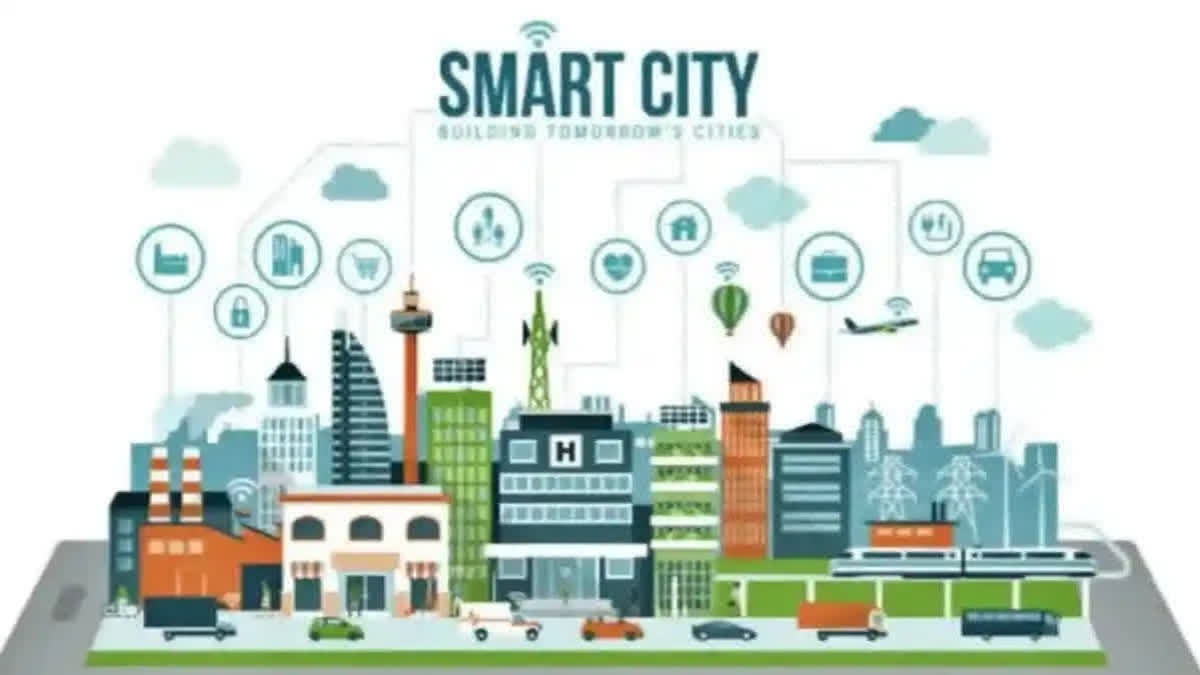By Gautam Debroy
New Delhi: The Ministry of Housing and Urban Affairs (MoHUA) has informed a parliamentary committee that smart cities having a population of less than 5 lakhs, have lesser planning and implementation capacities that resulted in the slow progress of the smart city mission.
"They also find difficulty in attracting human resources to prepare the project report and monitor them, as well as good vendors to execute these projects which are hampering the delay implementation of the smart city projects," the ministry said.
Stating that urbanisation in India is not uniform and is at varied levels, the ministry said, "As a matter of fact, 66 of the 100 selected cities in Smart Cities Mission have a population less than 10 lakhs. Further, 46 cities have a population less than 5 lakhs. These smaller cities have lesser planning and implementation capacities. They also find difficulty in attracting human resources to prepare the project report and monitor them, as well as good vendors to execute these projects. Some of the cities had to tender multiple times to get the right vendors for their projects."
While the physical progress in these smaller cities may have been slow, they have undertaken multi-sectoral projects which they have never implemented before. The smaller cities under the Mission were slow to start but most of them have accelerated the project implementation and matched the project completion with the bigger cities, the ministry further said.
The ministry has also undertaken an initiative of assessing the impact of its projects in 100 smart cities through 50 theme-based impact assessment research studies undertaken by 29 institutes of national repute that includes salient IITs, IIMs and others.
The ministry said that it will identify more city-specific challenges and reasons of slow progress in various size class cities. "The study is also expected to suggest how these smaller cities can further enhance their capabilities. The study is currently underway towards the finalisation stage," the ministry said.
The ministry also said that in spite of various reasons the slow progress is beyond the control of the mission and midway disruptions due to the pandemic, SCM was able to register substantial progress.
"As on 15 June 2024, all 8,010 projects undertaken in the Mission, worth around Rs 1,64,064 crore have been work ordered; of which 7,151 projects (90 per cent of total projects) worth Rs 1,43,601 crore (88 per cent by value) have been completed. The balance of ongoing projects too are in the advanced stage of implementation. As on June 12, 2024, under SCM, Rs 86,281 crore has been released; of which Rs 78,752 crore (91 percent) has been utilised,” the ministry said.
Although the government has set March 2025, as a deadline to complete all the smart city projects across the country, government data in possession of ETV Bharat indicates that the target may not be achieved by March.
At least 61 per cent of smart city projects in Port Blair, 30 per cent in Amaravati, 38 per cent in Itanagar, 69 per cent in Silvassa, 33 per cent in Dharamshala, 34 per cent projects in Aizawl, 44 per cent in Puducherry, 50 per cent in Greater Warangal, 44 per cent in Karimnagar, are still incomplete.
The housing ministry has also been planning to include more tier 2 cities (located between 50 to 100 km from the capital and tourist cities) in the next phase of India’s smart city mission with an aim to decongest the capital cities and act as a fillip factor for tier 3 cities for their growth.
Indian cities with a population of 50,000 to 99,999 are termed Tier 2 cities. These cities are considered emerging urban centers which experience significant growth in economic activities like employment, investment, trade, research, and education. Tier 3 cities in India are smaller urban centers with populations between 20,000 and 49,999.
Prof KK Pandey, from the Centre for Urban Studies, Indian Institute Public Administration told ETV Bharat that smaller cities have both advantages as well as disadvantages.
"If we talk about advantages, these cities are smaller in size. There is no major multiplicity of agencies as well as the magnitude of slums and unauthorised colonies are also less," said Prof Pandey. The smaller cities, at the same time, have weak institutional systems within the city government.
Prof Pandey also hailed the move of the housing ministry to include tier 2 and 3 cities in the next phase of the smart city mission.
"The inclusion of smaller cities will definitely decongest the capital cities and make them citizen-friendly," said Prof Pandey.
In June 2015, Prime Minister Narendra Modi launched India’s first smart city mission, an urban renewal and retrofitting program with an aim to develop smart cities across the country, making them citizen-friendly and sustainable.



